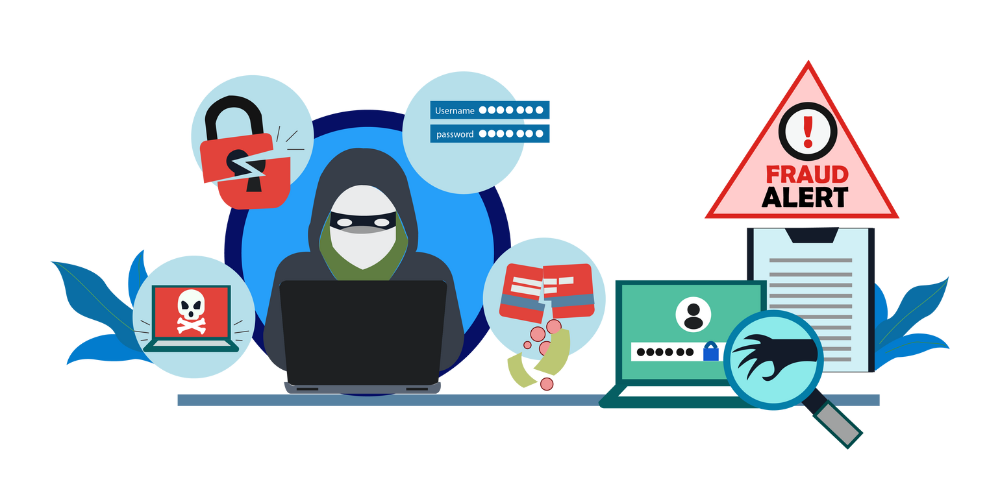In today's digital era, phishing attacks have emerged as a prevalent threat to organisations of all sizes. These cyber threats are not only becoming more sophisticated but also more damaging, posing a serious risk to the security and integrity of corporate data.
A 2022 report found that 96% of organisations reported at least one phishing attack in the last year, with 52% believing these threats to be more sophisticated.
Phishing prevention has become a critical concern for businesses, as these attacks can lead to significant financial losses, loss of customer trust, and even legal repercussions. Therefore, understanding and implementing robust phishing prevention mechanisms is crucial in safeguarding sensitive corporate information and maintaining business continuity.
Understanding Phishing Attacks and Their Impact on Businesses
So, let’s define what exactly is a phishing attack? It's a type of cybercrime where fraudsters pretend to be trustworthy entities and trick individuals into sharing sensitive information, such as login credentials or financial details.
Phishing attacks can be carried out in several ways - through emails, text messages, phone calls, or even fake websites. But email phishing is the most common. It allows attackers to send out mass emails to as many people as possible, hoping that even a small percentage will fall for their trap.

In email phishing, the fraudulent emails appear to be from legitimate sources, often urging immediate action. A variant of this is spear phishing, which involves highly targeted attacks against specific individuals or organisations, often using personalised information to increase the semblance of legitimacy.
In the UK, 83% of businesses that suffered a cyberattack in 2022 reported it as phishing. Phishing attacks are a very real and very costly threat for businesses and understanding and counteracting these attacks should be high on every organisation’s priority list.
How to Spot a Phishing Scam?
Recognising the common indicators of a phishing attempt is vital for effective prevention. These indicators include:
- Suspicious sender addresses
- Generic greetings
- Unexpected attachments
- Links to unrecognisable websites
Users should be wary of messages that create a sense of urgency, such as threats to close an account or warnings of unauthorised access.
Hyperlinks in emails are a red flag; hover over them (without clicking) to see if the URL matches the expected destination. Similarly, be cautious with email attachments, especially if they are unexpected. Look out for poor grammar and spelling too, as these can be indicators of a phishing attempt.
Cybersecurity in Google Workspace
Google Workspace offers inherent security features that provide multiple layers of protection. Its security infrastructure is built on the basis of Google's own highly secure platform, which is designed to stop cyber threats and ensure data integrity.

Google blocks around 100 million phishing emails every day.
Central to its defense strategy are the advanced machine learning algorithms that analyse patterns and detect potential threats in real-time, contributing to 99.9% accuracy in spam detection.
Gmail automatically flags suspicious emails, while Google Drive scans all uploaded files for viruses, alerting users before they download anything potentially harmful.
Google Workspace also incorporates robust email authentication protocols like SPF, DKIM, and DMARC, making it difficult for attackers to spoof genuine email addresses. Additionally, Safe Browsing technology warns users about potentially dangerous websites, while built-in malware scanning in Gmail automatically identifies and blocks malicious attachments.
These features, combined with regular security updates and the ability to enforce strong authentication processes, such as two-factor authentication, provide a multi-layered defence system that helps safeguard organisations against phishing and malware threats.
Empowering Your Employees: The Human Firewall
While Google’s security features work hard to protect your organisation and users from phishing attacks, there is still a chance for a malicious email to end up in your users’ inboxes.
Providing comprehensive training to your staff on recognising phishing attempts and malicious software, arms them with the tools they need to safeguard your business.
Regular, interactive training sessions ensure that staff members not only learn how to spot common indicators of phishing and malware attempts, but also create a culture of security awareness, and ability to respond to threats appropriately. This approach to cybersecurity education transforms employees from potential points of vulnerability into a powerful human firewall, protecting your organisation from cyber threats.
Therefore, Cobry partners with KnowBe4, the world's largest integrated platform for security awareness training and simulated phishing attacks. KnowBe4’s platform allows employers to test, train and conduct fully automated simulated phishing attacks to train your users and get measurable results.
This collaboration underscores our commitment to empowering businesses to stay secure and safeguard themselves from the ever-evolving landscape of cyber threats.
With an estimated 3.4 billion spam emails sent daily, cybersecurity isn't just an option—it's an imperative.
Protecting your organisation from phishing attacks requires a multi-faceted approach. Combining Cobry’s cybersecurity expertise with Google Workspace's advanced security features and comprehensive employee training, is essential for a robust defence against cyber threats.
Take the step towards enhancing your cyber resilience; get in touch and learn more about how we can help safeguard your business from the ever-present threat of phishing attacks.







